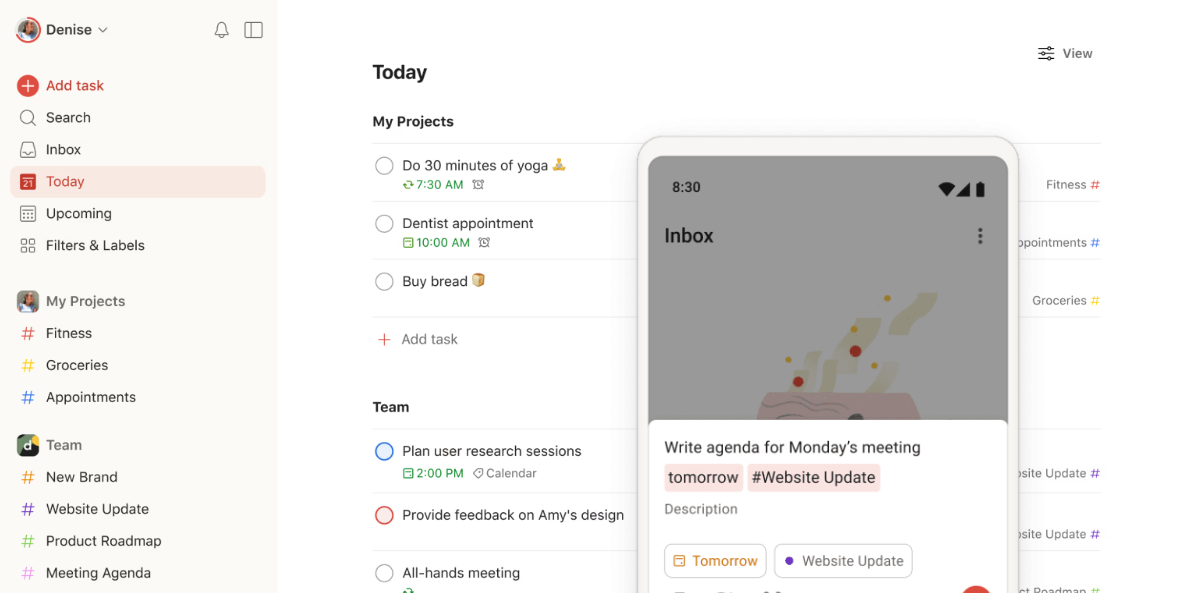The Distill Cycle of the Second Brain
Introduction to the Distill Cycle
Definition: The Distill Cycle is a crucial phase in Tiago Forte’s Second Brain methodology, focusing on simplifying and synthesizing captured information. This process transforms raw data into clear, actionable knowledge by highlighting the most relevant and useful points.
Importance: The distillation of information is vital for several reasons:
- Clarity: It helps to reduce the complexity of information, making it easier to understand and use.
- Efficiency: By focusing on the essential points, it saves time and effort in accessing and applying knowledge.
- Decision Making: Clear and synthesized information supports better decision-making processes.
- Knowledge Utilization: It ensures that the captured information is not just stored but also actively used and integrated into your work and life.

Fundamentals of the Distill Cycle
Theoretical Principles: The need to distill information is supported by several theoretical principles:
- Cognitive Load Theory: This theory suggests that our brains have a limited capacity for processing information. Simplifying and synthesizing information reduces cognitive load, making it easier to retain and recall.
- Information Processing Theory: This theory emphasizes the importance of organizing and simplifying information to improve comprehension and retention.
- Minimalism in Information Design: This principle advocates for stripping away non-essential elements to focus on the core message, enhancing clarity and understanding.
Benefits: Distilling information offers numerous benefits:
- Actionable Knowledge: By highlighting key points, distillation turns raw data into knowledge that can be easily acted upon.
- Enhanced Focus: It helps maintain focus on the most important aspects of the information, preventing distraction by irrelevant details.
- Improved Retention: Simplified and synthesized information is easier to remember and apply.
- Time Efficiency: It saves time by eliminating the need to sift through excessive information, allowing for quicker access to what truly matters.
- Better Communication: Clear and concise information is easier to communicate and share with others, fostering collaboration and understanding.
Distillation Techniques
Summary and Synthesis:
- Summary Methods: Use techniques like the “One-Sentence Summary,” where you condense the essence of the content into a single, concise sentence. Another approach is the “Paragraph Summary,” where you create a paragraph that captures the main points of a longer text.
- Information Synthesis: Combine information from various sources to form a cohesive understanding of the topic. This might involve comparing different perspectives and integrating complementary viewpoints to create a well-rounded synthesis.
Highlights and Annotations:
- Text Highlighting: Use digital or physical highlighters to mark important information while reading. Highlighting helps in quickly identifying key points and significant details.
- Margin Notes: Write brief notes in the margins of your documents or use digital note-taking tools to annotate important information. This practice allows you to capture your thoughts and insights as you review the content.
Mind Maps:
- Visual Organization: Use mind maps to visually organize information and display connections between different pieces of information. Mind maps help in breaking down complex topics into manageable sections and illustrate how various concepts are related.
- Software Tools: Utilize mind mapping software like MindMeister or XMind to create digital mind maps that can be easily edited and expanded as new information is added.
Note Cards (Fichamentos):
- Summarizing Large Volumes: Create note cards to consolidate and summarize large volumes of information. Each note card should contain key points, important quotes, and your own reflections on the material.
- Indexing: Use a systematic approach to index your note cards, making it easy to find and refer back to specific information when needed.
Tools for Distilling Information
Software and Applications:
- Notion: A versatile tool that allows you to capture, organize, and distill information in various formats, including databases, tables, and linked notes.
- Evernote: Ideal for taking and organizing notes, with features like tagging, highlighting, and integrating web clippings.
- Roam Research: A powerful tool for creating interconnected notes and knowledge graphs, making it easier to see relationships between different pieces of information.
- Obsidian: Great for creating a network of linked notes using markdown, helping you to distill and connect information seamlessly.
Features and Comparison:
- Notion: Best for comprehensive organization with a wide range of templates and customization options. Excellent for collaborative work.
- Evernote: Known for its robust web clipping and note-taking capabilities, making it easy to capture and distill information from various sources.
- Roam Research: Ideal for those who prefer a non-linear approach to note-taking and knowledge management, with its bi-directional linking feature.
- Obsidian: Perfect for users who value a local-first approach to note-taking, with strong support for linking notes and creating a personal knowledge base.
Best Practices for Distilling Information
Consistency:
- Regular Practice: Make distillation a regular part of your routine. Consistent practice ensures that your knowledge base remains clear, organized, and up-to-date.
Periodic Review:
- Scheduled Reviews: Set aside time periodically to review and update your distilled information. This practice helps in keeping your knowledge relevant and aligned with your current needs and projects.
Clarity:
- Clear Communication: Ensure that the distilled information is communicated clearly and concisely. Use simple language and avoid jargon to make the information accessible and easy to understand.
Relevance:
- Focus on Importance: Prioritize the most relevant and significant information during the distillation process. Discard redundant or irrelevant data to maintain a focused and useful knowledge base.
Tips and Tricks
Automation:
- Digital Tools: Use tools like Zapier or IFTTT to automate parts of the distillation process. For example, set up automations that send important emails to Evernote for summarizing or automatically tag and categorize new notes in Notion.
- Example: Configure a Zapier automation to save starred emails from Gmail into a specific Evernote notebook, where they can be summarized and annotated.
- Scripts and Plugins: Utilize scripts or browser plugins to highlight and extract key points from web articles automatically. Tools like Readwise can help by automatically collecting and highlighting important text from articles and e-books.
- Example: Install the Readwise extension to automatically sync highlights from Kindle and web articles to a central location for further distillation.
Customization:
- Personal Preferences: Encourage readers to tailor their distillation process to their own preferences. If they prefer visual summaries, suggest using mind maps or flowcharts. If they work better with textual summaries, recommend detailed note-taking and annotation.
- Example: A visual learner might use MindMeister to create detailed mind maps, while someone who prefers text might use Obsidian for its robust note-linking capabilities.
- Tool Customization: Highlight how different tools can be customized. For instance, Notion allows for extensive customization with templates and integrations, while Obsidian offers plugins for advanced features like graph views and backlinking.
- Example: Show how to customize a Notion template for project management, including sections for tasks, notes, and resources.
- Flexible Approaches: Suggest trying different distillation techniques and sticking with the ones that work best for them. Flexibility is key to maintaining an effective and personalized system.
- Example: Encourage experimentation with both digital and analog methods, such as combining digital note-taking with physical index cards for different types of information.
Conclusion
In conclusion, the Distill Cycle is a crucial part of Tiago Forte’s Second Brain methodology, aimed at transforming raw data into clear, actionable knowledge. This process not only simplifies and synthesizes complex information but also enhances our ability to utilize and apply this knowledge effectively in our personal and professional lives.
Summary of Key Points:
- Definition and Importance: We began by defining the Distill Cycle and discussing its importance in clarifying and making efficient use of captured information. Distillation is essential for reducing cognitive load and ensuring that the most relevant information is readily accessible.
- Techniques for Distillation: We explored various techniques for summarizing and synthesizing information, such as creating summaries, using highlights and annotations, employing mind maps, and organizing note cards.
- Tools for Distillation: We highlighted several digital tools that facilitate the distillation process, including Notion, Evernote, Roam Research, and Obsidian, and compared their features to help you choose the best fit for your needs.
- Best Practices: We covered best practices for maintaining consistency, ensuring regular updates, and focusing on clarity and relevance when distilling information.
Ongoing Importance of Distillation:
- Distillation is not a one-time task but an ongoing process. Continuously refining and updating your knowledge base is crucial for keeping it relevant and useful. Regularly reviewing and distilling information ensures that you stay organized and can quickly access the most important data when needed.
Encouragement for Implementation:
- Finally, we encourage you to implement and personalize your own distillation process. The benefits of having a well-organized and synthesized knowledge base are significant, from enhanced productivity to improved decision-making. Experiment with different tools and techniques to find what works best for you, and make distillation a regular part of your information management routine.
By following the guidelines and tips provided in this article, you can effectively manage and utilize the information you capture, transforming it into a valuable resource that supports your goals and enhances your productivity.



